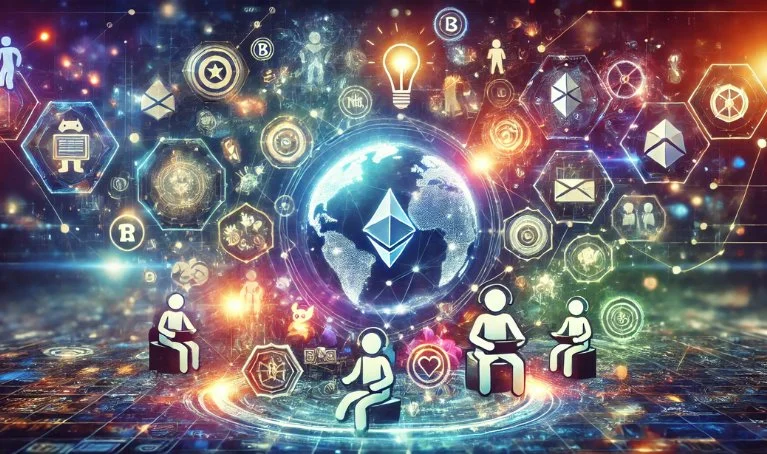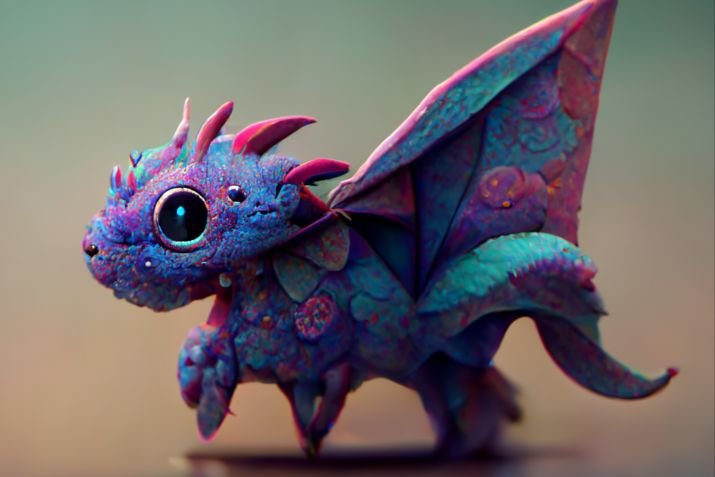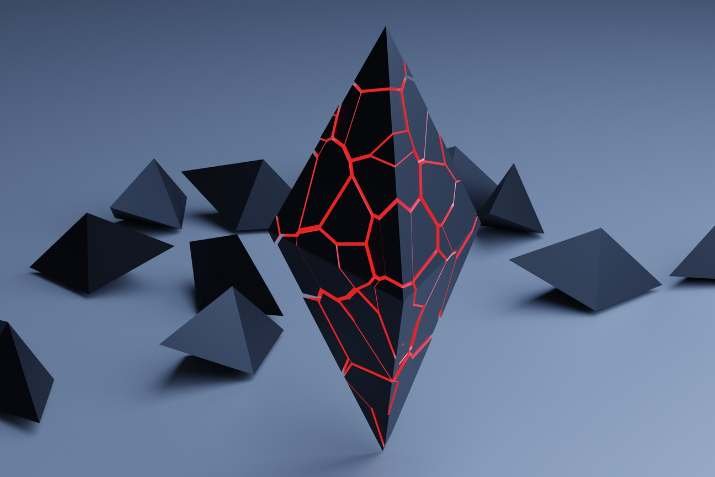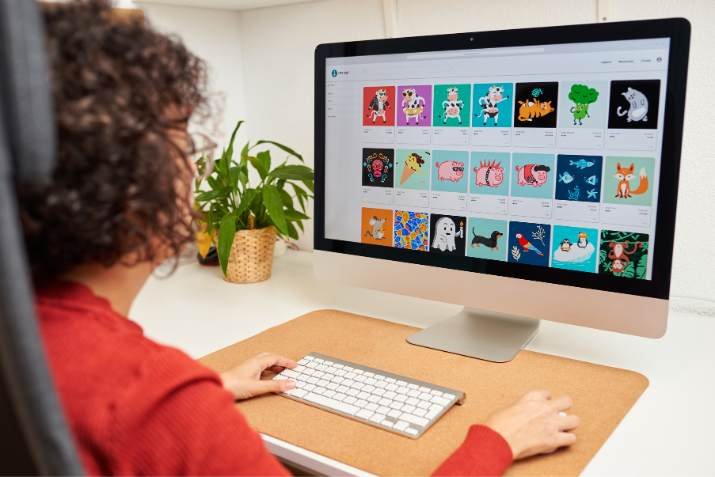Step-by-Step Guide to Creating a Successful NFT Collection
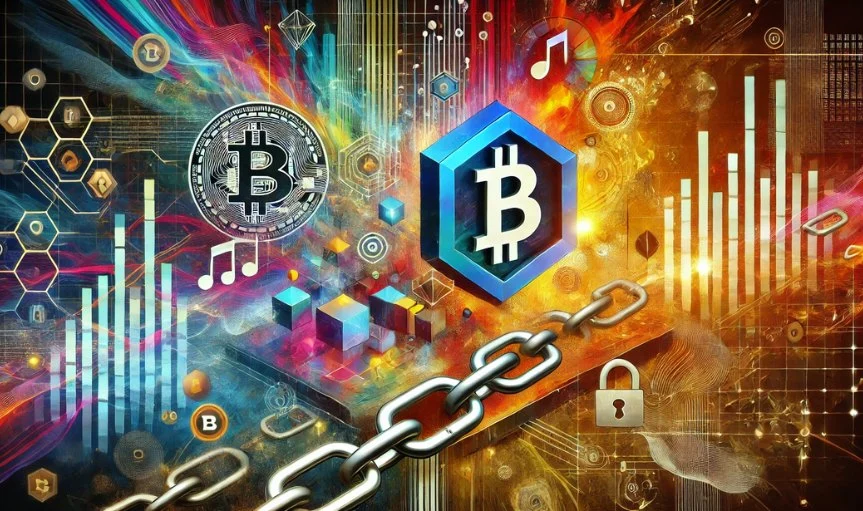
NFTs, or Non-Fungible Tokens, have rapidly gained popularity in the digital art and collectibles space. These unique digital assets offer a new way for creators to monetize their art, reach a global audience, and leverage blockchain technology for secure transactions.
Whether you’re a digital artist, a musician, or a content creator, NFTs provide an exciting opportunity to showcase your work and build a community around it. Incorporating a well-thought-out investing strategy can further enhance your potential returns, as it allows you to maximize the value of your collection through strategic pricing, rarity allocation, and targeted marketing.
This guide will walk you through every step of creating an NFT collection, from ideation to minting and selling.
Understanding the Basics of NFTs and NFT Collections
What are NFTs?
NFTs, or Non-Fungible Tokens, are unique digital assets stored and traded on blockchain platforms. Unlike cryptocurrencies such as Bitcoin or Ethereum, which are interchangeable (fungible), NFTs represent ownership of a specific digital item, like art, music, or in-game assets. Each NFT is unique and cannot be replicated, making them valuable for collectors and creators alike.
NFTs are stored on blockchain platforms like Ethereum, where ownership and transaction history are recorded securely. This ensures authenticity and transparency, as anyone can verify the ownership and provenance of an NFT.
Why Create an NFT Collection?
Creating an NFT collection offers several advantages:
- Revenue Generation: Selling NFTs can be a lucrative way to monetize digital art and other creative content.
- Artistic Exposure: Reach a global audience and gain recognition in the digital art space.
- Community Building: Build a dedicated community of fans and collectors around your work.
An NFT collection, rather than a single NFT, can increase value and interest. Collections often come with varying levels of rarity and themes, encouraging collectors to purchase multiple items to complete their set.
Preparing to Create Your NFT Collection
Decide on the Theme and Concept of Your Collection:
Choosing a compelling theme or concept is crucial for standing out in the crowded NFT market. Whether it’s digital art, gaming assets, or music, your theme should resonate with your target audience.
- Brainstorm Ideas: Think about what inspires you or what stories you want to tell through your collection.
- Refine Your Concept: Narrow down your ideas to a theme that is both unique and appealing. Consider what makes your collection different from others.
Choose the Right Blockchain Platform:
Your choice of blockchain platform can significantly impact your NFT collection’s success. Here are some popular options:
- Ethereum: The most widely used platform for NFTs, known for its large user base and established infrastructure. However, it comes with high transaction fees.
- Polygon: A layer-2 solution that offers lower transaction fees and faster processing times compared to Ethereum.
- Solana: Known for its low fees and fast transactions, Solana is gaining popularity among NFT creators.
- Binance Smart Chain: Offers low fees and a growing community but is less decentralized than Ethereum.
Your choice should consider factors like transaction fees, environmental impact, and audience reach.
Designing and Creating Your NFT Assets
Create Digital Assets for Your Collection:
To create your NFTs, you’ll need digital assets like artwork, music, or videos. Here’s how to get started:
- Use Digital Art Tools: Programs like Adobe Photoshop or Illustrator are great for creating digital art. Ensure that your assets are high-quality and visually appealing.
- Separate Artwork into Layers: For collections, consider separating your artwork into different layers (e.g., backgrounds, characters, accessories). This allows you to generate multiple unique NFTs by combining these elements in various ways.
Generate Variations and Rarity Levels:
Creating different versions of your NFTs can add value to your collection:
- Modify Elements: Change colors, accessories, or backgrounds to create variations. This adds uniqueness and rarity to your NFTs.
- Set Rarity Percentages: Determine the rarity of each variation to attract collectors. Rare items can be more valuable and sought after.
Setting Up Your Digital Wallet and Connecting to an NFT Marketplace
Set Up a Digital Wallet:
A digital wallet is essential for creating, storing, and selling NFTs. Here’s a step-by-step guide:
- Choose a Wallet: Popular options include MetaMask, Coinbase Wallet, and Trust Wallet.
- Install and Set Up: Download the wallet app and follow the instructions to create an account.
- Fund Your Wallet: You’ll need cryptocurrency (e.g., ETH for Ethereum) to cover transaction fees. Transfer funds from an exchange or another wallet.
Choose an NFT Marketplace:
To sell your NFTs, you need to choose a marketplace. Here are some options:
- OpenSea: The largest NFT marketplace with a wide range of categories and a large user base.
- Rarible: A community-owned marketplace that allows creators to mint and sell NFTs easily.
- Mintable: Offers both free and paid minting options and focuses on ease of use.
- Foundation: A curated marketplace for high-quality digital art.
Once you’ve chosen a marketplace, connect your digital wallet to get started.
Minting Your NFT Collection
Upload Your Digital Assets to the Marketplace:
Follow these steps to mint your NFTs:
- Upload Your Assets: Choose the digital files you want to mint and upload them to the marketplace.
- Add Metadata: Provide details like the title, description, and properties of your NFT.
- Set Royalties: Decide on a percentage for royalties, which you’ll earn from future sales of your NFTs.
Consider “Lazy Minting”: This allows you to create NFTs without paying upfront gas fees, making it a cost-effective option for creators.
Create and Organize Your Collection:
To create a collection page:
- Define Collection Details: Give your collection a name, description, and other details.
- Add Items: Include the NFTs you’ve created, organizing them based on themes, rarity, or other factors.
Promoting and Selling Your NFT Collection
Develop a Marketing Strategy:
Promoting your NFT collection is key to attracting buyers. Here are some tips:
- Leverage Social Media: Share your work on platforms like Twitter, Instagram, and TikTok.
- Engage with NFT Communities: Participate in NFT communities on platforms like Discord and Clubhouse.
- Collaborate with Influencers: Partner with influencers in the NFT space to reach a broader audience.
Leverage Auctions and Drops:
Different sales methods can help maximize visibility and sales:
- Fixed-Price Listings: Set a specific price for your NFTs.
- Timed Auctions: Create urgency with a limited-time auction.
- Exclusive Drops: Release your NFTs in limited batches to create buzz and excitement.
Managing Your NFT Collection After Launch
Engage with Your Community:
Building a community is crucial for long-term success:
- Host AMAs (Ask Me Anything): Interact with your audience and answer their questions.
- Offer Exclusive Content: Provide exclusive access or rewards to your most dedicated collectors.
- Plan Future Drops: Keep your community engaged by planning future releases.
Analyze Performance and Adjust Strategies:
Use marketplace analytics to track sales, engagement, and market trends. Adjust your marketing strategy based on this data to improve performance.
Legal Considerations and Best Practices
Understand Legal Requirements and Copyrights:
Before creating your NFT collection, it’s essential to understand intellectual property rights, copyright laws, and platform terms. This helps avoid legal issues and ensures your collection complies with all regulations.
Maintain Transparency and Trust:
Be transparent with buyers about the authenticity, rarity, and value of your NFTs. Clear communication builds trust and enhances your reputation in the NFT community.
Conclusion:
Creating a successful NFT collection involves understanding the basics, preparing your assets, minting, and promoting them effectively. By following these steps, you can confidently explore the NFT space and unleash your creative potential to reach a global audience.
Remember, the NFT market is still evolving, and the possibilities are endless for those willing to innovate and engage with their community. So, get started today and see where your creativity can take you!
